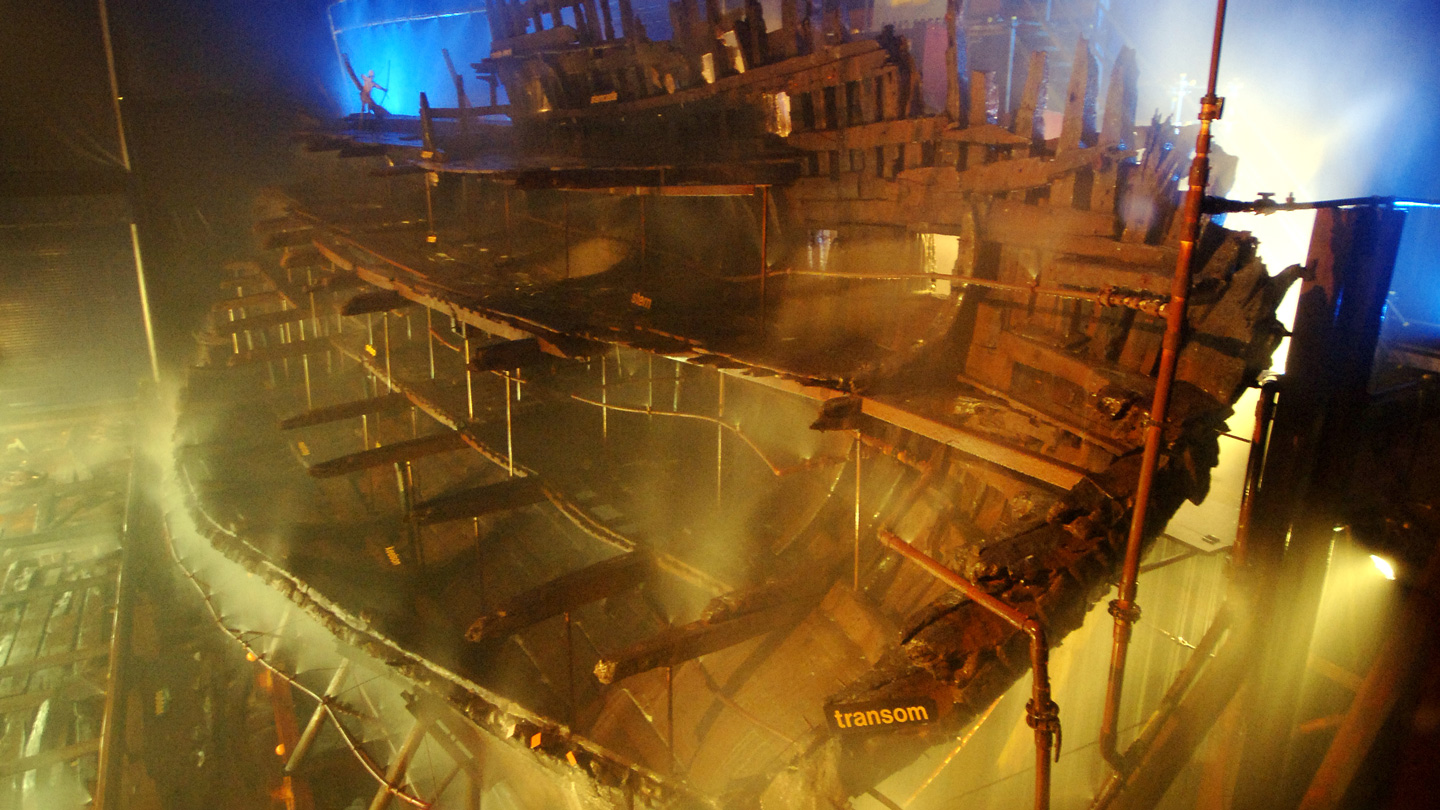“My name is Siân, in the Summer of 2023 I was a Weston Heritage Conservation and Heritage Science intern at the Mary Rose Museum. Over a period of two months, I cleaned a section of anchor cable, made of hemp, that was found alongside an anchor on the upper deck of the Mary Rose…

Removing concretions on one end of the rope, using a scalpel.
Between 1979 and 1982, more than 100 metres of anchor cable was excavated and raised from the upper deck of the Mary Rose. Anchor cables were used on the ship for anchoring, and mooring. The piece of cable I worked on is 3.6 metres long with an 18cm diameter. Cable is made by twisting three ropes together, to create a structure that is tight, elastic and resistant to moisture.
![An engraving from the 18th century of nine men twisting three ropes together to form one large cable rope. “Illustrations of ships and maritime subjects, taken from the EncyclopeÌdie meÌhodique].LieÌge: Plomteux, doi: 10.5479/sil.483909.39088007931140](https://maryrose.org/wp-content/uploads/2024/04/making-rope-1024x335.jpg)
An engraving from the 18th century of nine men twisting three ropes together to form one large cable rope. “Illustrations of ships and maritime subjects, taken from the EncyclopeÌdie meÌhodique].Liege: Plomteux, doi: 10.5479/sil.483909.39088007931140
To preserve the cable, when in use on board the Mary Rose, it was coated in pitch – a dark resin that comes from the sap of different species of coniferous trees. The pitch kept the cable waterproof and therefore reduced its weight after it had been in the water. The pitch gives the cable a dark appearance and may have been applied before the ropes were twisted together or afterwards. There is a build-up of small crystals of pitch. The build-up was probably caused by repeated layers of pitch being applied while the cable was in use. Furthermore, the heat from the sun could soften the pitch and make it melt across the surface.
In order to conserve the cable, I removed the sand, silt, dirt and any other material form the seabed that had become stuck in the surface of the cable. The deposits appeared as a grey-white colour and by removing them, the appearance of the cable became clearer. Removing the deposits also helped to reduce further damage. The pitch was not removed as it was originally put on the cable in Tudor times.
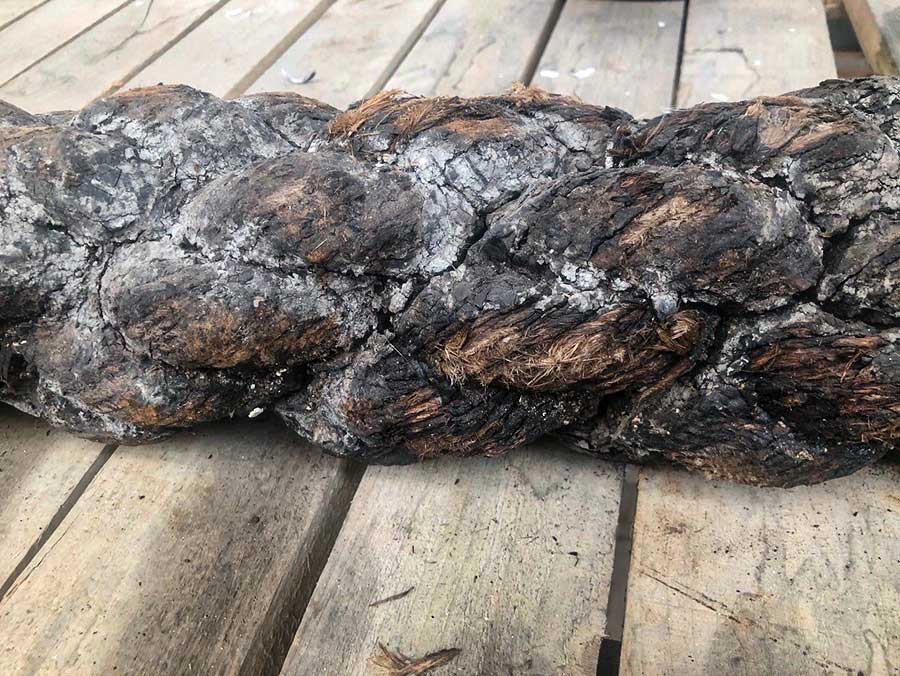
Close up section of the rope, where the sand, silt and dirt are white/grey/beige in consistency and were removed from the surface. Some of the natural fibres of the rope, where the pitch has been lost, are visible.
I worked alongside Isabella, another intern. We used a variety of tools to remove the sand, silt and dirt, which included dental tools, a scalpel, toothbrush and a vacuum.
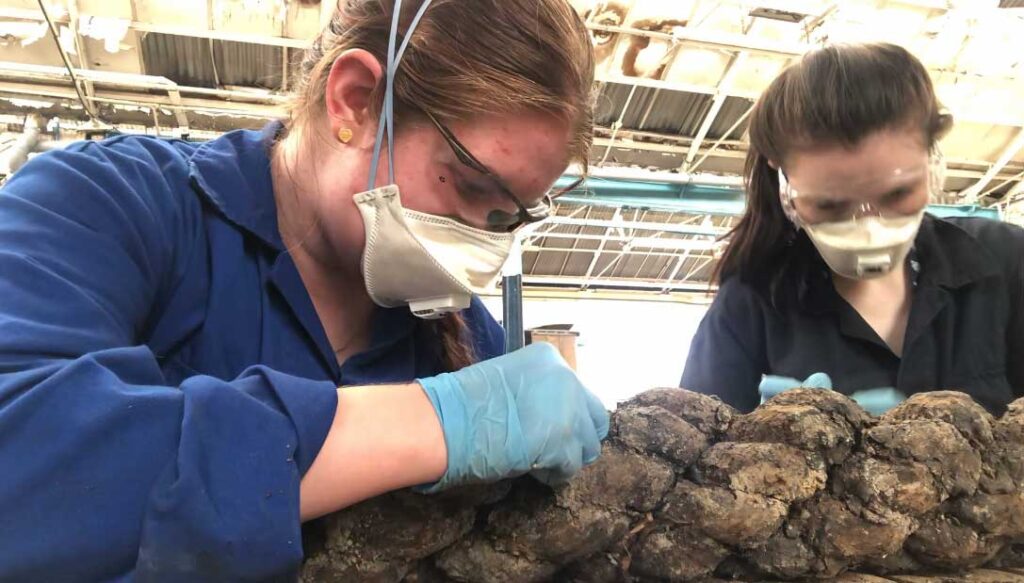
Meeting in the middle as we continue to clean the rope.
Both of us wore boiler suits, disposable gloves, eye goggles and masks. This was due to the large amount of dust and debris produced as the deposits came away. Together, we worked from each end of the cable and met in the middle. Then we rolled the cable over to complete the other sides.
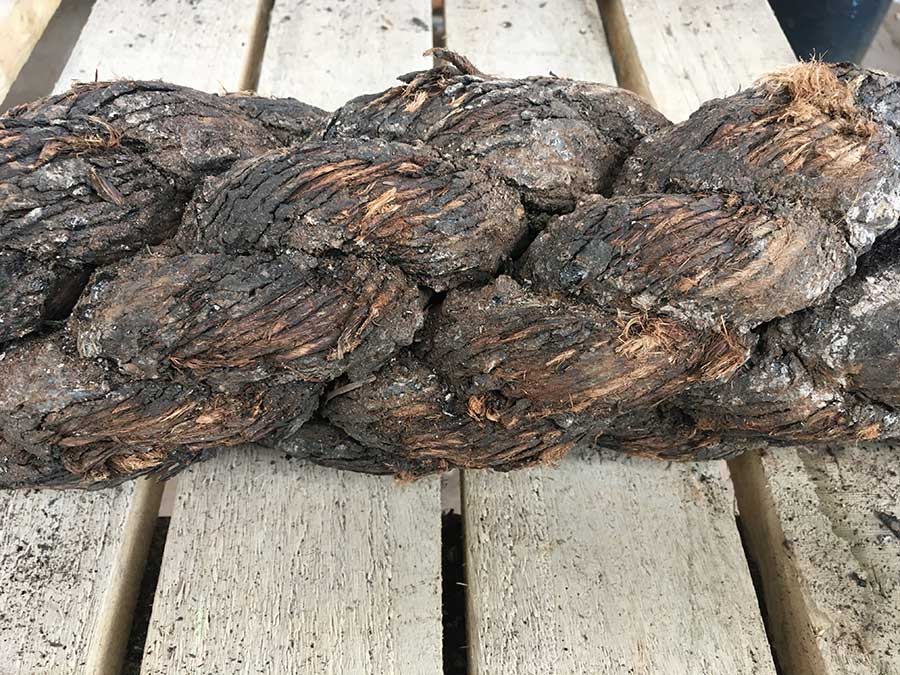
The appearance of the rope once the sand, silt and dirt from the seabed were successfully removed.
Overall, treating the rope has been very satisfying and rewarding. On display at the Mary Rose Museum there are several pieces of rope that you can see for yourself!
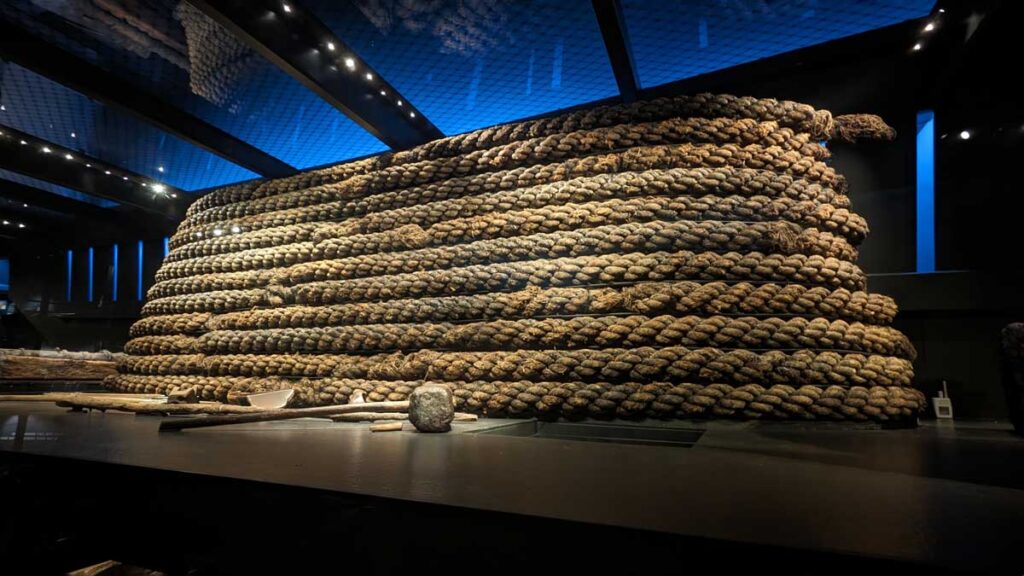
Coiled rope on display in the Main Deck context gallery at the Mary Rose Museum.



